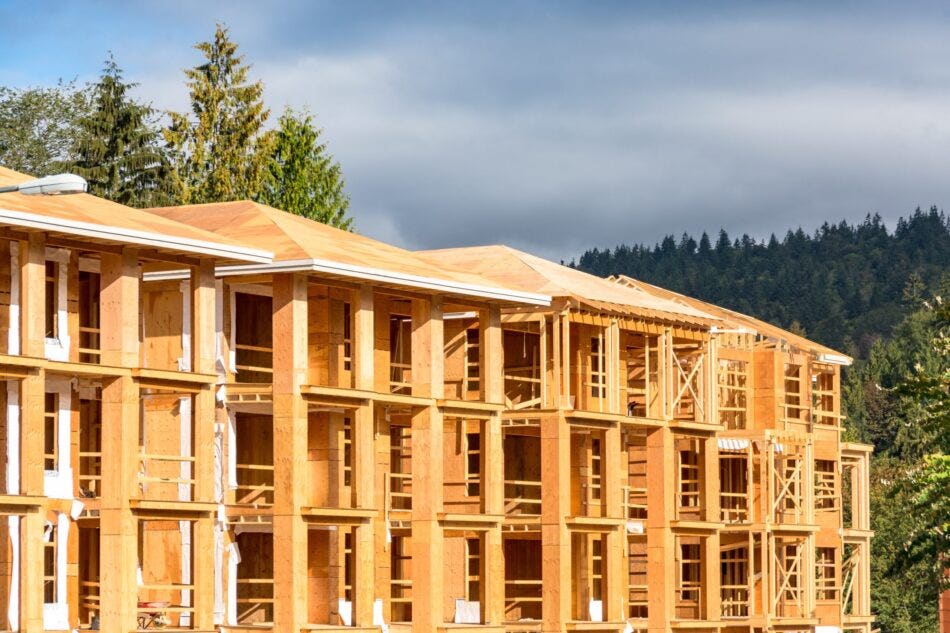The abundance and affordability of timber makes wood the construction material of choice for one and two-story residential buildings. Timber has great advantages in terms of speed of construction its lightweight sustainability resistance to Canada’s extreme temperatures and the ease with which wood-frame buildings can be modified and extended. On the other hand wooden building frames are much more combustible and less moisture resistant than other materials making it more susceptible to organic problems such as mould and infestations. But how much do these disadvantages really affect the cost of insurance?
Canadian Wood Frame House
Rest assured insuring a typical Canadian single-family wood frame house is comparable in cost to insuring a home built with other materials as long as the home satisfies building codes. While the risk of fire and water damage is higher for wood frame houses other variable risk factors have a greater impact on the overall premium. Particularly if the interior walls and ceilings are finished to a high standard to ensure that the wooden frame of a house is protected from fire damage and moisture entry. Fire alarms and suppression systems can also reduce insurance costs.
Wooden Foundations – What You Should Know
While most Canadian homes are built on a concrete foundation some builders are exploring the possibility of wooden foundations to completely eliminate the need for concrete. Modern compressed wood products have impressive load bearing capabilities. However the moisture resistance of wooden foundations is a growing area of concern for insurers despite modern moisture-proofing methods. In some cases insurers have refused to insure buildings with wooden foundations altogether or aggressively manage their exposure to risk by reducing coverage and increasing premiums. Making this an important factor when considering building choices.
Mid-Rise Wood Buildings
In contrast to smaller homes taller apartment and commercial buildings are constructed using steel-reinforced concrete. Mid-rise buildings offer developers the possibility of choice in construction materials. Building with reinforced concrete means that there are necessary pauses in construction while the concrete used on lower floors cures before work can continue on the upper floors. Wooden construction requires no such delays and also allows for exterior and interior work to take place simultaneously. This reduces the cost and time of construction considerably. This also means insuring mid-rise buildings – both during their construction and across their lifespan – may raise the cost significantly for two main reasons:
Builders’ risk insurance – While a wood frame building is under construction the fire and moisture resistant elements of a finished building are not yet in place. Concrete buildings are not subject to the same risks which is why builders’ risk insurance (which covers damage and loss during construction) is much higher for wooden constructions. This cost is minimized by the speed of construction of single-family homes but becomes much more significant for larger taller wood frame buildings
Home and commercial insurance for mid-rise buildings – The increased fire and water damage risks for wood frame buildings are considered much more significant by insurers for mid-rise buildings than for individual homes. This can lead to reduced coverage and increased costs in insurance for developers commercial users of a building and especially for people buying units within a larger wood frame building.
Overall wood-framed homes offer savings in premium while still providing convenience in construction and lasting durability for our climate. If you are looking to rent or buy carefully consider the materials used in building the foundations of homes and mid-rise buildings from an insurance cost perspective. Speak to your broker before you commit to buying or renting and avoid the surprise of an increased expense to your budget.

